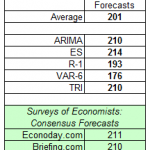I’ll give you a chance to pick yourself off the floor first. While the media focus seems to be overwhelmingly on problems with the Tesla 3 (TSLA) production these days, the fact is that some of the company’s other business lines are growing like gangbusters.
Orders for the groundbreaking Tesla Powerwall were up an eye-popping 450% during the first half of 2018. This device costs $5,800 ($4,060 after the federal alternative investment tax credit) and can store enough power to run your house for three days. When integrated with your solar rooftop array the combined system allows you to reap a greater return from your alternative energy investment.
Tesla could sell more Powerwalls but is constrained by lithium-ion battery supplies from its Sparks, Nevada, Gigafactory. Doubling the world’s lithium-ion battery supply in one shot, Tesla is already shopping for a location for a second Gigafactory. As the company made ramping up Tesla 3 production to 100,000 units this year its top priority, the car has first called on battery supplies.
Tesla has also recently completed several utility-sized battery projects that have consumed lithium ion supplies, including those in Australia, Moss Landing, California, for PG&E, and for Green Mountain Energy in Vermont. This means that Tesla has already carved out a dominant position in a market that is expected to grow by tenfold over the next five years. GTM Research estimated that sales of energy storage products in the U.S. will soar from $541 million in 2018 to $1 billion in 2019 and $4.6 billion by 2013.
It is developing into a global market. The U.S. only accounts for 30% of the global battery storage market, with energy-poor Japan and South Korea holding major shares. Tesla competitors include Florida-based NextEra Energy in America, E.on in Germany, and Fluence, a joint venture between Siemens and AES, also from Germany. Germany seems to be the place where green energy philosophies and top-rate engineering meet.









Leave A Comment